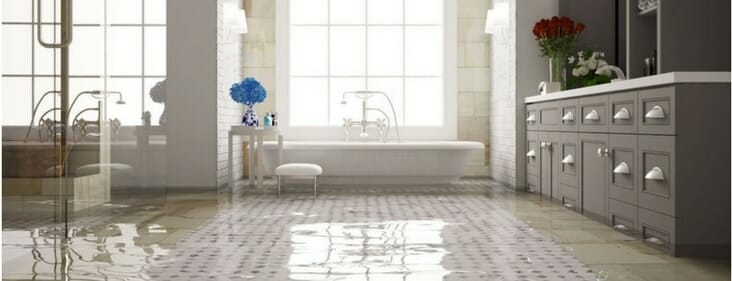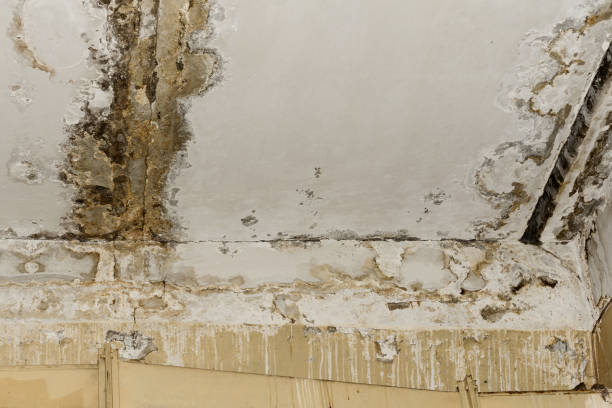What're your opinions about How to Repair and Prevent Bathroom Water Damage??

Water damage frequently happens in the bathroom because of the water utilized daily. Sometimes, the damage could be a little mold and mildew from the shower. Various other times, it's substantial damages on your flooring. Whatever it is, it is always excellent to recognize the reason as well as prevent it prior to it happens.
This overview will go through several of the typical root causes of water damage in the shower room. We will likewise analyze what you can do to avoid these causes from damaging your shower room. Let's dive in.
These are the usual reasons you would certainly have water damage in your washrooms and exactly how you can detect them:
Excess Dampness
It's trendy to have that long shower as well as splash water while you dance around and act like you're performing, but occasionally these acts might create water damage to your restroom.
Splashing water around can create water to visit corners and also develop molds. Enjoy exactly how you spread out excess wetness around, as well as when you do it, clean it up to prevent damages.
Splits in your wall ceramic tiles
Shower room wall surface ceramic tiles have been specifically developed for that function. They secure the wall surface from dampness from people taking showers. Nonetheless, they are not unbreakable.
Sometimes, your washroom wall surface floor tiles split and also enable some dampness to seep right into the wall surface. This could possibly damage the wall if you do not take any kind of action. If you notice a fracture on your wall floor tiles, fix it quickly. Do not wait until it ruins your wall.
Overflowing commodes and sinks
As people, sometimes we make mistakes that might trigger some water damage in the washroom. As an example, leaving your sink faucet on can create overflowing and damage to other parts of the bathroom with moisture.
Additionally, a defective commode might trigger overruning. For example, a broken commode handle or other parts of the cistern. When this takes place, it might harm the floor.
As soon as you discover an overflowing sink or commode, call a plumber to aid manage it quickly.
Burst or Dripping Pipes
There are several pipes lugging water to different parts of your shower room. Some pipes take water to the commode, the sink, the taps, the shower, and also many other areas. They crisscross the small area of the shower room.
From time to time, these pipelines could get rustic and also ruptured. Various other times, human action could trigger them to leakage. When this happens, you'll find water in the corners of your shower room or on the wall surface.
To detect this, keep an eye out for gurgling wall surfaces, mold and mildews, or mold. Call a professional emergency situation plumbing technician to repair this when it occurs.
Roofing system Leaks
In some cases, the trouble of water damage to the restroom might not come from the bathroom. For instance, a roof covering leakage might create damage to the bathroom ceiling. You can find the damage done by considering the water discolorations on the ceiling.
If you locate water spots on your ceiling, check the roof to see if it's harmed. After that, call an expert to assist solve the problem.
Final thought
Water damage to your restroom can be irritating. Nonetheless, you can handle it if you stop some of the causes stated in this guide. Call an expert emergency situation plumbing technician if you see any serious damages.
How to Prevent Water Damage in Your Bathroom?
Water damage repair is an expensive, meticulous, and lengthy process. Unfortunately, bathrooms are the most susceptible rooms to water damage due to toilets, showers, and sinks. Pipes and fixtures wear out over time and are not immune to damage. But all is not lost, as there are ways to prevent water damage from occurring in your bathroom.
Check Your Plumbing
Nothing lasts forever, especially pipes, which can rust and begin leaking over time. You should periodically conduct pipe inspections and pay attention for any musty smells or water stains that may indicate you need water damage repair. Here are some things to check:
Frequently test valves for your toilet, shower, and sink to ensure they are properly working. Check faucet supply lines hidden under vanities and replace when needed. Replace cracked or deteriorating caulking along sinks, tubs, and showers. If you notice a clog in your sink, call in a professional. Since you can’t check the pipes in the wall, keep an eye out for stains, drywall bubbling, musty smells, and excess moisture; if the bathroom is on a second level, check the ceiling of the room directly below for these signs. Don’t Overwork Your Toilet
One of the most common reasons bathrooms need water damage repair is due to overflowing toilets. Save yourself the hassle of cleanup by being mindful and not pushing your toilet to extreme limits. If you have young children, it is especially important to keep an eye on them when they are in the bathroom and to teach them how to avoid clogging the toilet. Here are some more tips to help prevent your toilet from overflowing:
If you have a septic tank, only use septic-safe toilet paper Do not flush anything down the toilet besides toilet paper; items like diapers and sanitary napkins will clog the piping Pay attention to your toilet’s water level: If it’s low, it could mean it is partially clogged or that there is a crack in the toilet bowl https://www.alure.com/home-improvements-blog/resources/how-to-prevent-water-damage-in-your-bathroom

I found that piece on How to Repair and Prevent Bathroom Water Damage? when doing a lookup on the search engines. Appreciated our blog posting? Please share it. Help others check it out. I treasure reading our article about How to Repair and Prevent Bathroom Water Damage?.
Schedule Your Service